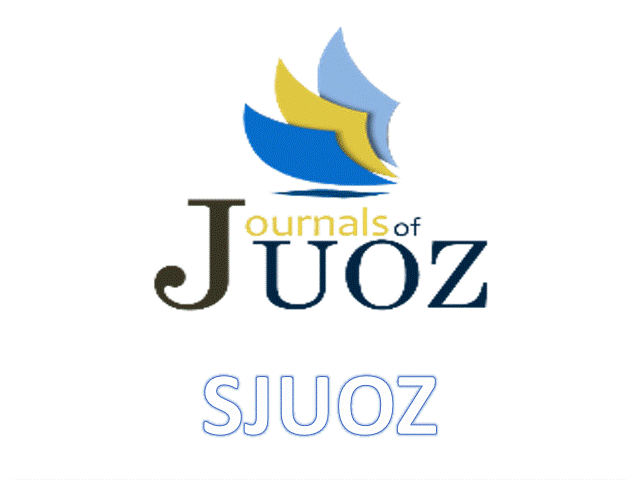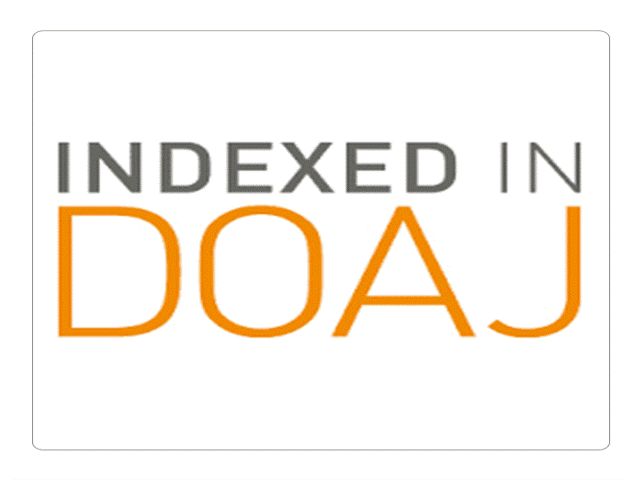A User-Based Method To Test The Usability of University of Zakho Website
DOI:
https://doi.org/10.25271/sjuoz.2019.7.4.650Keywords:
usability, educational websites, user-based method, user satisfaction, The University of ZakhoAbstract
Websites developed for an organisation, especially a university, always need maintenance and improvements to increase user satisfaction and to provide an environment that provides up-to-date information and services in efficient ways. Unfortunately, academic websites are often designed depended on the structure and objectives of an organisation, rather than on whether students, lecturers, and administrative staff find the website usable. This leaves the website users’ needs and expectations unsatisfied. The University of Zakho (UoZ), a public university in the Kurdistan Regional Government, is developing its website to include most of the information required. However, the usability of this website still needs to be checked to know whether or not it satisfies users. This study employs a user-based method to get the rate of usability satisfaction from the perspective of students and academic staff, and it investigates whether the occupation has significant impacts on usability satisfaction. This method is achieved by using a Website Analysis and Measurement Inventory (WAMMI) questionnaire, which is including five factors: attractiveness, controllability, helpfulness, efficiency, and learnability. The study offers recommendations and suggestions to the UoZ web developers for improving the website during the maintenance period. Further, this study proposes ways to enhance the academic websites usability.
Downloads
References
Ahmad, A., Hussain, A., Flayyih, O. H., Abdulwahab, W., & Sabri, M. I. (2017). Utilizing WAMMI Components to Evaluate the Usability of E-commerce Website. Journal of Telecommunication, Electronic and Computer Engineering (JTEC), 9(2-11), 139-143.
Ahmed, N. S. (2013). A fractal-based model to improve cooperation among physicians in distributed healthcare information systems. University of Malaya.
Al-Radaideh, Q. A., Abu-Shanab, E., Hamam, S., & Abu-Salem, H. (2011). Usability Evaluation of Online News Websites: A User Perspective Approach. International Journal of Human and Social Sciences, 6(2), 114-122.
Ariola, M. M. (2006). Principles and methods of research: Rex Book Store.
Bautista, J. (2010). Students' perspectives on university Web site usability: An evaluation: Pepperdine University.
Caglar, E., & Mentes, S. A. (2012). The usability of university websites–a study on European University of Lefke. International Journal of Business Information Systems, 11(1), 22-40.
Claridge, N., & Kirakowski, J. (2016). WAMMI Website. Retrieved October 12, 2018, from http://www.wammi.com/index.html
Haji, V. M., & Ahmed, N. S. (2017). A web-based management information system for Human resources in selected universities of Duhok Province. Science Journal of University of Zakho, 5(2), 214-220.
Harpel-Burk, P. (2006). Medium-sized universities connect to their libraries: Links on university home pages and user group pages. Information technology and libraries, 25(1), 12-23.
Hasan, L. (2012). Investigating the relative importance of design criteria in the evaluation of the usability of educational websites from the viewpoint of students. Paper presented at the Proceedings of the World Congress on Engineering (WCE 2012).
Hasan, L. (2014). Evaluating the usability of educational websites based on students' preferences of design characteristics. International Arab Journal of e-Technology, 3(3), 179-193.
Huang, L.-M., & Bilal, D. (2019). Usability of University Recruitment Web Pages from International Doctoral Students’ Perspectives. Paper presented at the International Conference on Human-Computer Interaction.
Jabar, M., Usman, A., & Awal, A. (2013). Assessing the usability of university websites from users’ perspective. Australian Journal of Basic and Applied Sciences, 7(10), 98-111.
Kaya, A., Ozturk, R., & Gumussoy, C. A. (2019). Usability Measurement of Mobile Applications with System Usability Scale (SUS) Industrial Engineering in the Big Data Era (pp. 389-400): Springer.
Melgarejo, L. T., Del Río, C. Z., & Vilchez, E. Q. (2019). Exploring the Relationship Between Web Presence and Web Usability in Peruvian Universities. Paper presented at the International Conference on Human-Computer Interaction.
Mentes, S. A., & Turan, A. H. (2012). Assessing the usability of university websites: An empirical study on Namik Kemal University. Turkish Online Journal of Educational Technology-TOJET, 11(3), 61-69.
Mustafa, S. H., & Al-Zoua’bi, L. F. (2008). Usability of the academic websites of Jordan's universities an evaluation study. Paper presented at the Proceedings of the 9th International Arab Conference for Information Technology.
Panagopoulos, C., Menychtas, A., Tsanakas, P., & Maglogiannis, I. (2019). Increasing Usability of Homecare Applications for Older Adults: A Case Study. Designs, 3(2), 23.
Patterson, K., & Alles, A. (2004). Usability and meeting the needs of educational Web site users. Paper presented at the Proceedings of the Tenth Australian World Wide Web Conference.
Thowfeek, M. H., & Salam, M. N. A. (2014). Students’ assessment on the usability of E-leaming websites. Procedia-Social and Behavioral Sciences, 141, 916-922.
Yan, P., & Guo, J. (2010). The research of web usability design. Paper presented at the 2010 The 2nd International Conference on Computer and Automation Engineering (ICCAE).
Downloads
Published
How to Cite
Issue
Section
License
Copyright (c) 2019 Nawzat S. Ahmed

This work is licensed under a Creative Commons Attribution 4.0 International License.
Authors who publish with this journal agree to the following terms:
- Authors retain copyright and grant the journal right of first publication with the work simultaneously licensed under a Creative Commons Attribution License [CC BY-NC-SA 4.0] that allows others to share the work with an acknowledgment of the work's authorship and initial publication in this journal.
- Authors are able to enter into separate, additional contractual arrangements for the non-exclusive distribution of the journal's published version of the work, with an acknowledgment of its initial publication in this journal.
- Authors are permitted and encouraged to post their work online.








